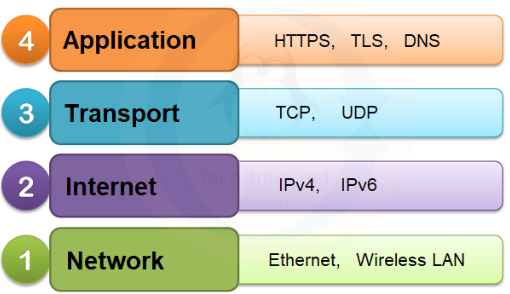
Understanding Protocols: HTTP, TCP, and Their Roles
The internet is built upon a stack of protocols, with each layer serving a distinct purpose. The most commonly encountered protocols are TCP and HTTP, which work together but serve different roles in data communication. Let's explore their differences and relationships.

What is a Transport Protocol?
A transport protocol is responsible for managing the delivery of data packets between two devices. It ensures the data is transmitted reliably and correctly over the network. Examples of transport protocols include:
- TCP (Transmission Control Protocol): This is the most widely used transport protocol. It guarantees the reliable and ordered delivery of data. It ensures that all packets arrive in the correct order, retransmitting any lost data. It is the foundation for many internet applications.
- UDP (User Datagram Protocol): Unlike TCP, UDP is faster but does not guarantee reliable delivery. It is used for real-time applications like video streaming and online gaming, where speed is more important than reliability.
What is an Application Protocol?
An application protocol defines the rules for communication between software applications. It determines how data is formatted, transmitted, and processed by the applications. Some common application protocols include:
- HTTP (Hypertext Transfer Protocol): This is the protocol used for transferring web pages on the internet. It runs on top of TCP and defines how browsers and web servers communicate.
- FTP (File Transfer Protocol): Used for transferring files between computers on a network.
- SMTP (Simple Mail Transfer Protocol): Used for sending emails between servers.
Difference Between Transport and Application Protocols
The key distinction lies in their layers and functions:
- Transport Protocols (like TCP or UDP) manage the movement of data between devices over a network. They ensure that data packets reach their destination correctly and in the right order.
- Application Protocols (like HTTP) manage how applications communicate over a network. They focus on the format and meaning of the data being exchanged, not its delivery.
How Do HTTP and TCP Work Together?
HTTP operates at the application layer, and it relies on transport protocols like TCP to actually deliver the data. Here's how the process typically works:
- When you enter a URL into a browser, the browser initiates an HTTP request (an application protocol) to a web server.
- HTTP sends the request using TCP (a transport protocol), ensuring that the data is reliably delivered to the server.
- The server processes the HTTP request and responds with an HTTP response, which is also sent over TCP to ensure reliability.
Protocol Flow Example: Sending an HTTP Request
- Network Layer: Establishes the physical connection between devices
- IP Protocol: Handles addressing and routing of packets
- TCP Protocol: Establishes reliable connection between client and server
- HTTP Protocol: Formats and processes the application data (web request)
Example: HTTP over TCP
Let's say you're browsing a webpage. The following steps occur:
- 1. Your browser sends an HTTP request (Application Protocol) to a web server.
- 2. This request is sent over TCP (Transport Protocol), which handles the transmission of the data.
- 3. The server responds with an HTTP response, also transmitted over TCP.
Why is This Relationship Important?
By separating concerns between transport and application protocols, we can create efficient, reliable, and flexible systems. Each protocol can focus on its core responsibilities:
- TCP ensures data is delivered accurately and reliably.
- HTTP ensures that web applications can interpret and present that data correctly to the user.
Key Takeaway
The internet relies on both transport and application protocols. Transport protocols like TCP ensure the reliability of data transfer, while application protocols like HTTP determine how that data is structured and understood by the receiving application.